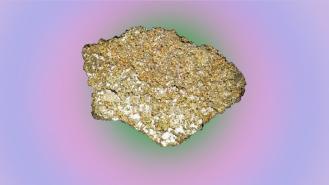By figuring out how to manufacture in the lab a rare mineral, previously found only in meteorites, two teams of researchers may have just helped secure America’s clean energy future.
Permanent magnets: Of the 118 elements on the periodic table, 17 fall into the category of “rare earths,” and contrary to their name, these materials aren’t terribly rare — each is more common than gold, and one is more plentiful than even copper.
Permanent magnets are used to make products that play a vital role in the battle against climate change.
Rare earth elements are used to make a slew of products, from smartphone screens to x-ray machines, but permanent magnets are arguably the most important.
These are objects that, once magnetized, create their own magnetic fields, and we need them to build wind turbines, EV motors, and other products that play a vital role in the battle against climate change.
A shaky supply: Rare earth elements may not be exactly “rare,” but because they are widely dispersed in the Earth’s crust, miners need to go through the environmentally destructive process of extracting, and processing, a lot of material to get a small amount of rare earths.
That hasn’t deterred China from tapping into its large supply of rare earth elements, though — the nation dominates the rare earth market and manufactures more than 90% of the world’s rare earth permanent magnets.
Tetrataenite could end the US’s reliance on China for permanent magnets — but it’s found almost exclusively in meteorites.
The idea: Given the tense US relationship with China — and China’s willingness to withhold rare earth elements in response to unrelated political tiffs — it makes sense that the US is looking for ways to reduce its dependence on China for permanent magnets.
The mineral tetrataenite has magnetic properties that make it a leading contender for replacing traditional rare earth elements in permanent magnets. The problem is that it basically doesn’t naturally form on Earth — it’s found almost exclusively in meteorites, which cooled extremely slowly over millions of years.
What’s new? In October 2022, two different groups — one at Northeastern University and one at the University of Cambridge — announced that they’d figured out how to make tetrataenite in the lab.
They aren’t the first to manufacture the meteorite material, but unlike past techniques — which required scientists to expose iron-nickel alloys to radiation — their methods have the potential for mass production.
Two new techniques for making tetrataenite in the lab could lead to its mass production.
How it works: The Northeastern team found that it could manufacture tetrataenite by heating and cooling an iron-nickel alloy, while applying extensional stress and a magnetic field.
Cambridge’s technique, meanwhile, centers on the mixing of precise quantities of phosphorus with iron and nickel.
“What was so astonishing was that no special treatment was needed: we just melted the alloy, poured it into a mold, and we had tetrataenite,” said lead researcher Lindsay Greer.
Looking ahead: Northeastern researcher Laura Lewis told NPR that her team still needs to test its tetrataenite to see if it holds up against the kind that comes from meteorites. Even if it does, it would be at least 5 to 8 years before it could be used to make permanent magnets.
The Cambridge team says it also needs to research whether its synthetic tetrataenite could be used to make permanent magnets — it hopes to suss that out with the help of major magnet manufacturers.
“We just melted the alloy, poured it into a mold, and we had tetrataenite.”
Lindsay Greer
The big picture: If the US could manufacture its own tetrataenite, it could reduce our dependence on China for permanent magnets, but we’d still be reliant on Chinese supply chains for the rare earth elements needed to make other products.
For that to change, the US will need to explore other sources of these valuable elements, such as the heaps of fly ash leftover from burning coal — or the surface of the moon.
We’d love to hear from you! If you have a comment about this article or if you have a tip for a future Freethink story, please email us at tips@freethink.com.
